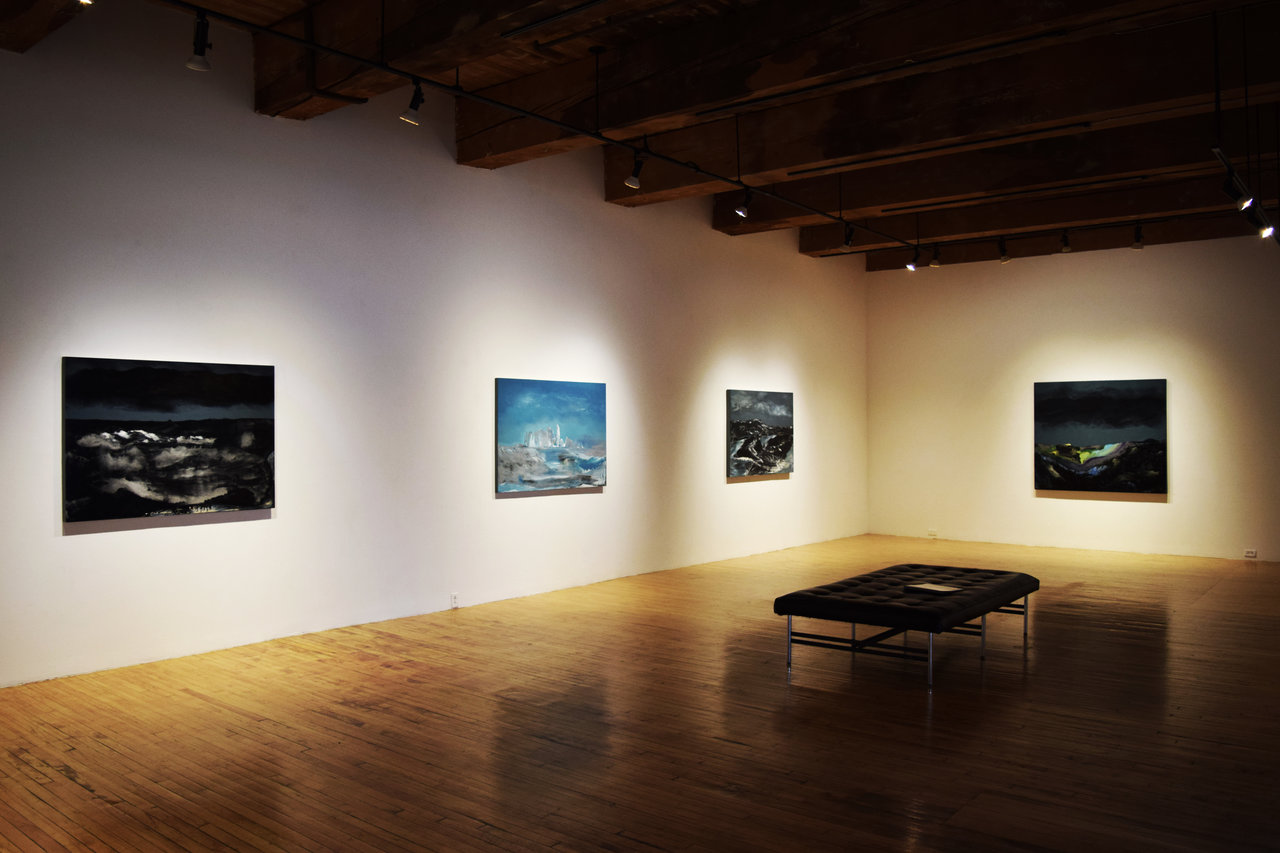 Installation view of Andrew Rucklidge, A Bright Room Scanned Darkly at Christopher Cutts Gallery, 2017. Photo: Simon Termine
Installation view of Andrew Rucklidge, A Bright Room Scanned Darkly at Christopher Cutts Gallery, 2017. Photo: Simon Termine
The Canadian landscape has been thoroughly explored by artists for its august sense of presence, wonderment, and purity. The North in particular, characterized by its sparseness and frigidity, represents a land virtually untouched by human civilization. A variety of groups ranging from the residing Aboriginal cultures to the historically-renowned Group of Seven have conveyed its lingering spirituality, acknowledging the serenity beneath the otherwise desolate frontier. In his one-man exhibition, Andrew Rucklidge presents his collection of paintings that capture the subtle complexities of these iconic sceneries with an amalgam of mediums and techniques. Using encaustic, egg tempera, distemper, photographic print, and oil on wooden and canvased surfaces, his works utilize fantasy and abstraction to recognize the natural resonance these landscapes emit.
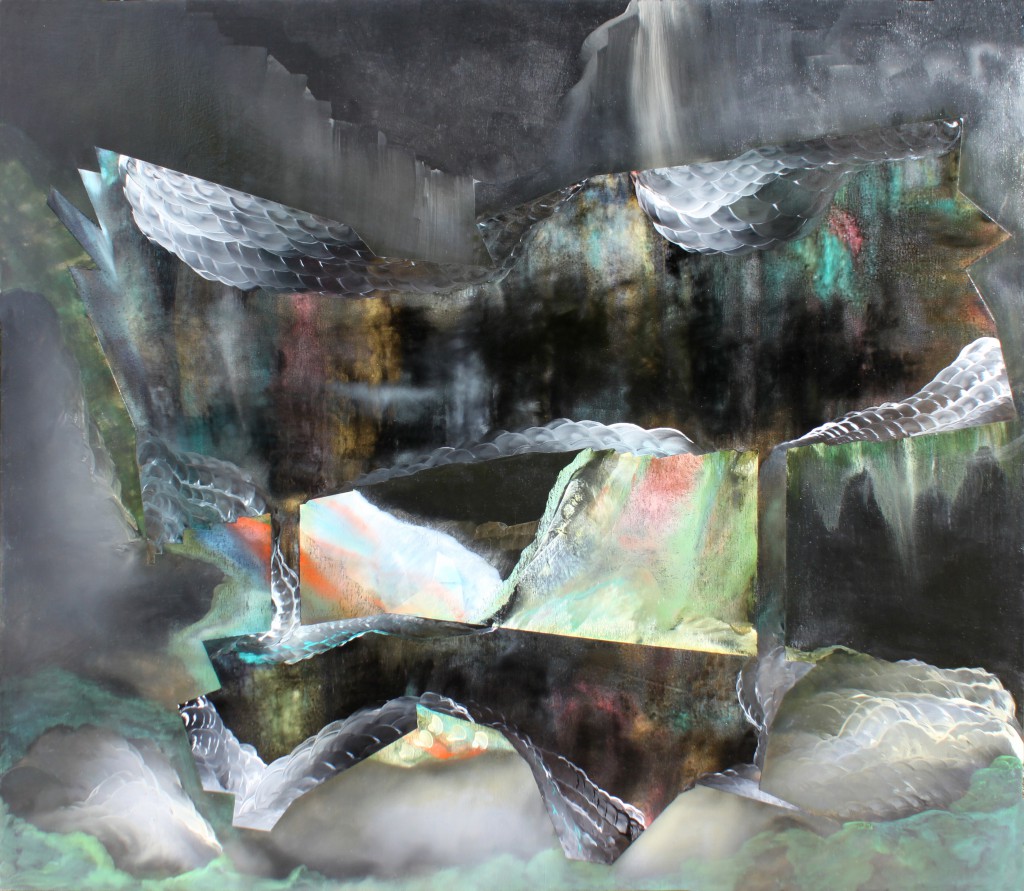 Andrew Rucklidge, A Bright Room Scanned Darkly, 2017, oil on canvas on toned gesso, 52 x 60 inches. Courtesy of Christopher Cutts Gallery
Andrew Rucklidge, A Bright Room Scanned Darkly, 2017, oil on canvas on toned gesso, 52 x 60 inches. Courtesy of Christopher Cutts Gallery
A Bright Room Scanned Darkly is inspired by Rucklidge’s pictorial studies of northern Canada – picturesque locations such as Baffin Island and Hudson Bay – that were scanned as moving images. Expanses become exaggerated through the motion blur; some details are diminished and other enhanced; what is ultimately illustrated are distortions of light and space that occupy the voids embedded throughout these landscapes. Rocky shorelines, blackened mountain ranges, glacial waters, frost-touched tundra, and open skies can all be distinguished amidst the abstractive figures.
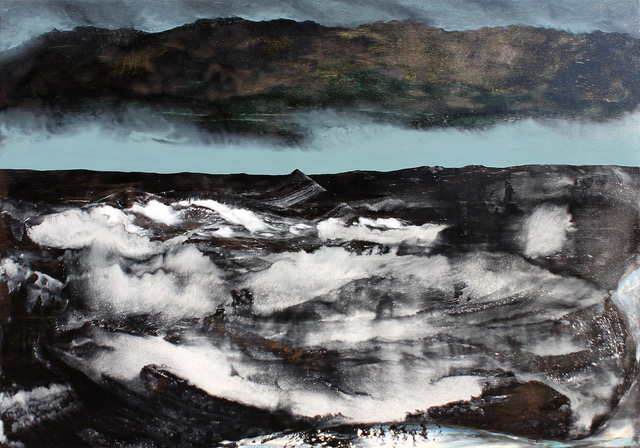 Andrew Rucklidge, The wasting of a Pingo, 2017, oil and egg tempera on toned gessoed panel, 38 x 54 inches. Courtesy of Christopher Cutts Gallery
Andrew Rucklidge, The wasting of a Pingo, 2017, oil and egg tempera on toned gessoed panel, 38 x 54 inches. Courtesy of Christopher Cutts Gallery
One of the most emphatic elements seen in Rucklidge’s works are the structured, geological forms, which are often seen in contrast to the dynamic light effects. Bubblin Crude, for example, depicts the coarse, reflective stone that exposes the colors peeking from the light originating from both the natural and photographic sources. Ohers such as Ground Subsidence, Flow Without Sideslip, and Lost in the Barrens depict the black cliffs and islands that flourish in the northern coasts. Streams of brightened snow can be seen trailing across the dark stone or lightly breezing in the wind and water currents. Complimented with skylines that are either clear or stormy, likewise brightening or darkening the ambience, the collection evokes both serenity and omnipotence. Not only does Rucklidge strive to emulate the structural aspect that construct these northern settings, but he also succeeds to communicate its invisible qualities.
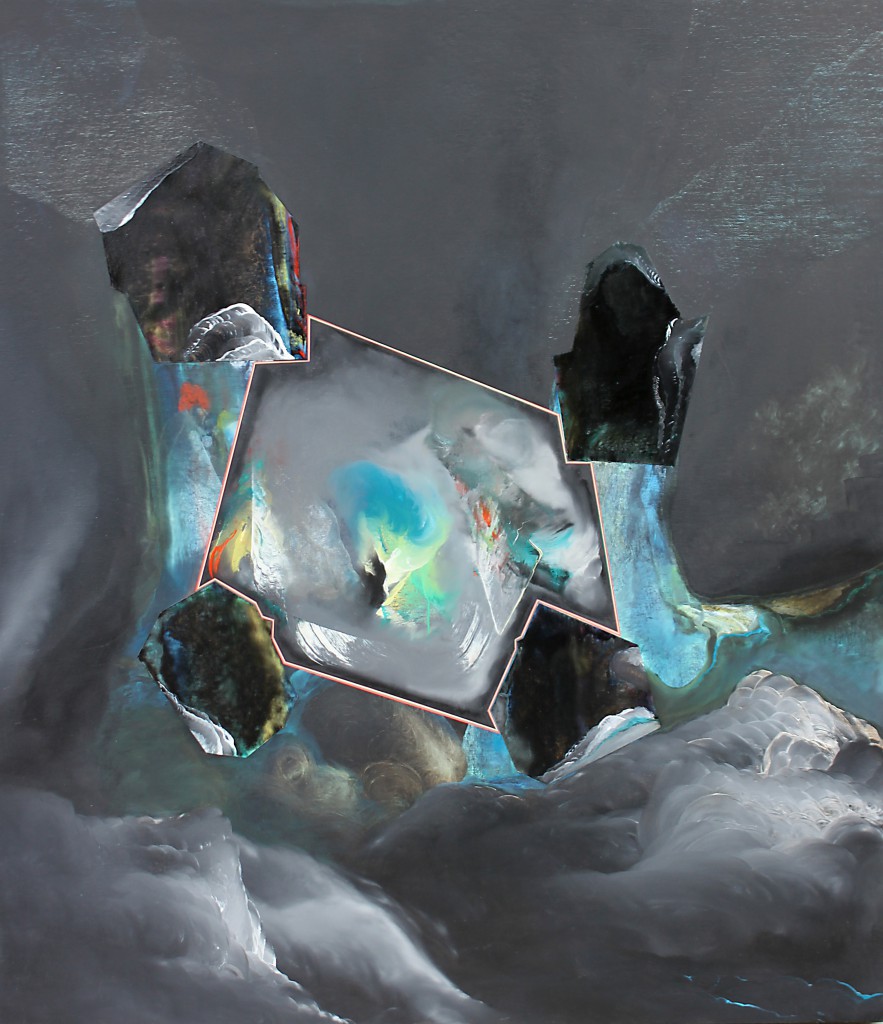 Andrew Rucklidge, Bubblin Crude, 2017, oil on toned gessoed canvas, 60 x 52 inches. Courtesy of Christopher Cutts Gallery
Andrew Rucklidge, Bubblin Crude, 2017, oil on toned gessoed canvas, 60 x 52 inches. Courtesy of Christopher Cutts Gallery
Rucklidge combines the fantastical and abstractive with the realistic to depict the northern landscapes that have become emblematic of Canada’s natural aesthetic. Though they suggest the distinctive features that characterize the tundra, the photographic manipulations of light and form distort these preconceived understandings. The solitary expanse is reconceptualised with adages of color and embellishments of the image to convey a unique, otherworldly element that is unlike anything seen in other environments. Simply because the arctic is expansive and wild does not mean that it does not possess a life of its own; it just requires a different perspective that appreciates the quality of that emptiness and what it actually holds.
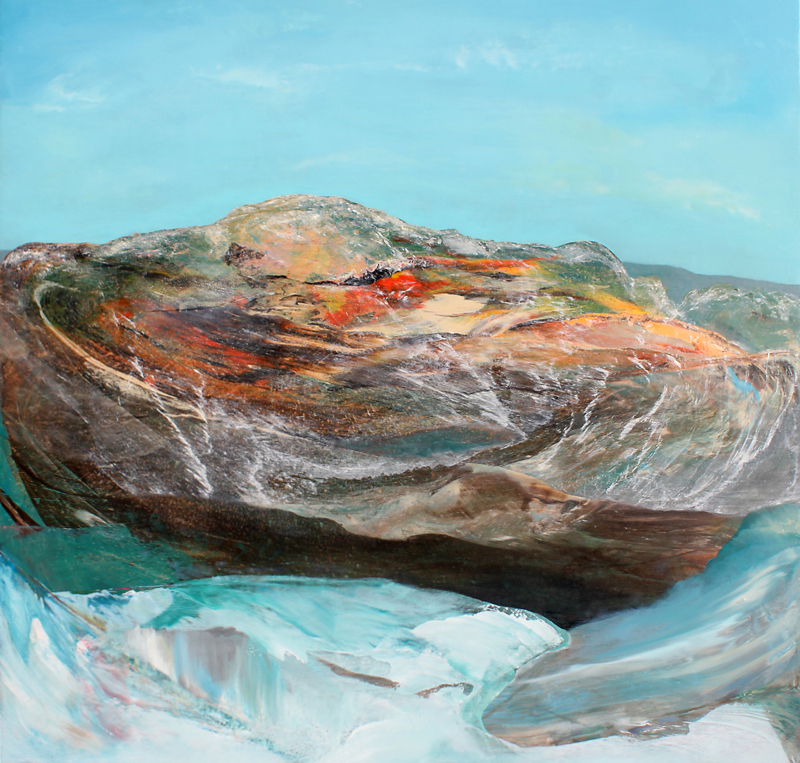 Andrew Rucklidge, Slope retreat, 2017, oil and egg tempera on toned gessoed panel, 44 x 46 inches. Courtesy of Christopher Cutts Gallery
Andrew Rucklidge, Slope retreat, 2017, oil and egg tempera on toned gessoed panel, 44 x 46 inches. Courtesy of Christopher Cutts Gallery
Simon Termine
*Exhibition information: Andrew Rucklidge, A Bright Room Scanned Darkly, November 24 – December 23, 2017, Christopher Cutts Gallery, 21 Morrow Avenue, Toronto. Gallery hours: Tue – Sat 10 am – 6 pm.
